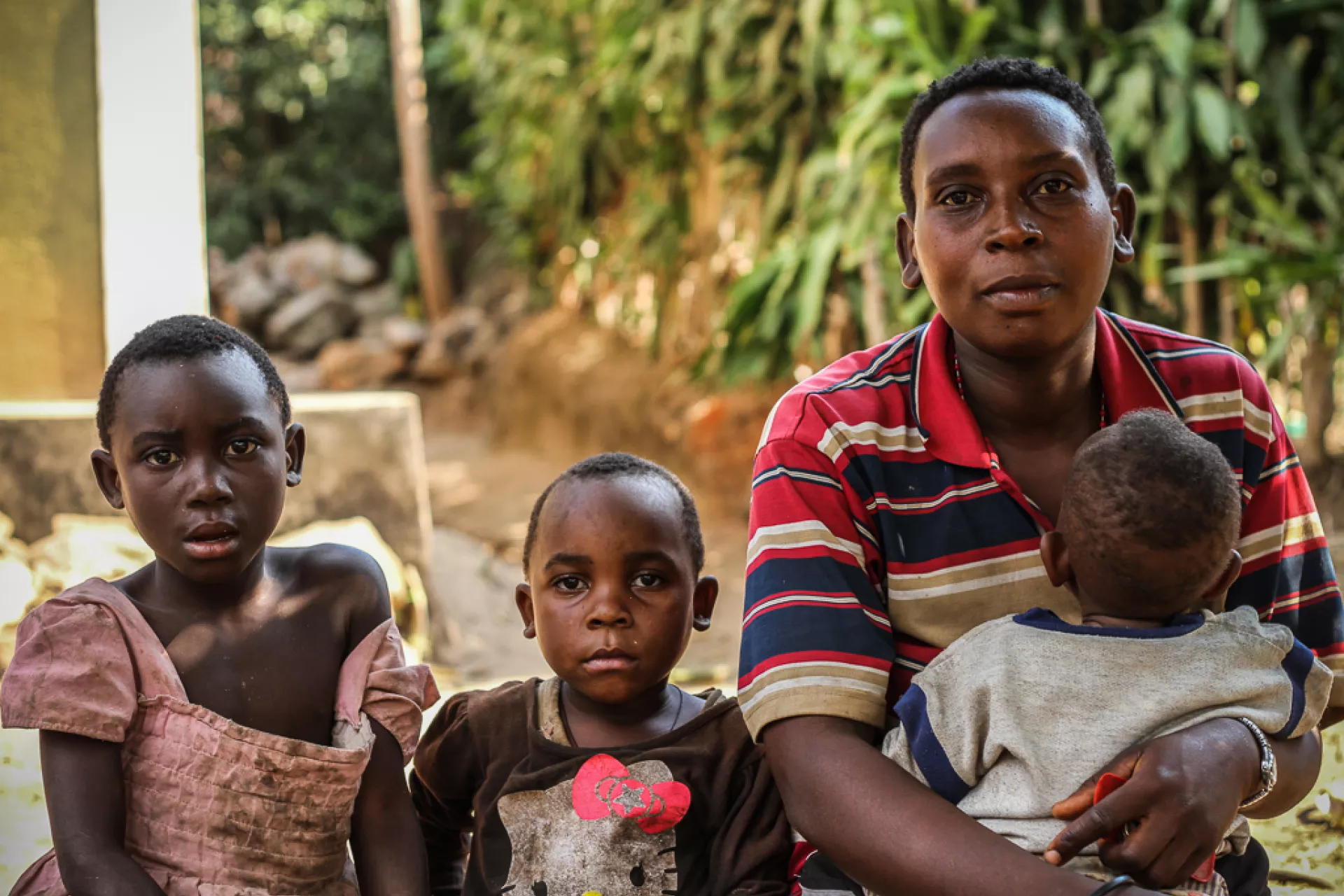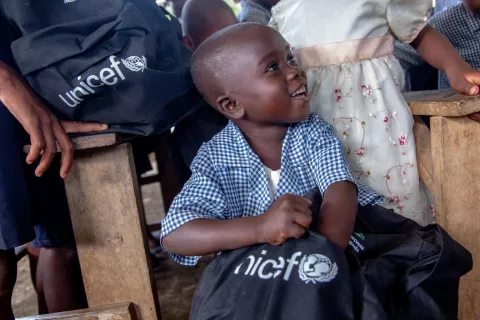Community leaders unite against malnutrition in Burundi
As a socio-political crisis, limited farmland and internal displacement exacerbate food insecurity in Burundi, many vulnerable families are finding it more and more difficult to feed their children.

As a socio-political crisis, limited farmland and internal displacement exacerbate food insecurity in Burundi, many vulnerable families are finding it more and more difficult to feed their children. Find out how local volunteers are fighting child malnutrition in their communities.
MUGINA, Burundi, 30 September 2016 – “I don’t know what is happening with my little child. She is not eating well and has lost her appetite little by little. We are worried and I don’t like to see her suffering,” says 34-year-old Donavina Ndereyimana, a mother of five. She lives in Mugina, a poor community in the province of Cibitoke, and is one of the many mothers there who knows the anguish of having a child with severe acute malnutrition.
Donavina’s daughter, Angie-Marie, is just 13 months old, but she is weak, her belly and feet are swollen and her hair is becoming yellowish. She cries loudly when the community health worker measures her arm and confirms that she needs to be treated urgently.
“We used to eat the same food every day: beans, rice, cassava bread… We don’t have money to buy other things in the market and our small portion of land is all we have for the whole family,” Donavina says.
Heroes from the hills
Malnutrition has always been a problem in Burundi, but since the outbreak of the socio-political crisis in 2015, rising food prices and a deteriorating economy have put additional pressure on the most vulnerable families. A recent study by World Food Programme shows that almost 50 percent of households are food insecure.
Community leaders, including heads of hills (villages) and community health workers, are demonstrating a heroic effort to help the most affected communities. In July, hundreds of volunteers conducted a mass door-to-door campaign across Burundi’s six most vulnerable and food insecure provinces, screening all children aged 6 months to 5 years for acute malnutrition. The campaign – which was funded by the Central Emergency Response Fund (CERF) and carried out in partnership with the Ministry of Health, UNICEF, World Relief, Pathfinder International and Concern Worldwide – reached an estimated 437,874 children.

Estelle, 45, a community healthworker, screens a baby to determine if she is suffering from severe malnutrition. Fortunately the situation is not critical.
Estelle Mbabarempore is one of the volunteer community health workers who conducted door-to-door screenings. At age 45 and with 5 children, she is a role model among mothers in Gitukura, who are grateful for her dedication to protecting their children from the devastating effects of malnutrition.
“The main problem that causes malnutrition in our commune is the lack of knowledge of our mothers on which are the most nutritious and healthy meals for the children. In addition, families that farm also sell the healthiest food – like beans – on the market because those are also the most profitable products,” she says.
Like many communes in Burundi, Gitukura is remote and isolated, and it is only with the presence of community health workers on the ground that screening is even possible. These volunteers know where the households are, who are the most in need, and do not hesitate to walk long distances to reach families to make sure no one is forgotten.
“I love my work, as I love my country and I want the best for the future of our children,” says Ndabiteze Elie, 68, another community health worker in Cibitoke. In just one day, he has already screened 35 children, and this time all of them were in good health.

Ndabiteze Elie, 68, is a community healthworker in Gasenyi, Cibitoke. Here he holds up Mid-Upper Arm Circumference (MUAC) tape, which is used to measure children's arms to determine if they are suffering from malnutrition.
The land problem
Located in Africa’s Great Lakes region, Burundi is a small, landlocked country with rough, hilly terrain. Nine out of ten Burundians depend on farming as a livelihood, but only 47 per cent of its land is suitable for farming. As most families have many mouths to feed, this limited farmland is a major underlying cause of child malnutrition in the country.
Repeated migrations connected to political instability have compounded the malnutrition problem, particularly in border provinces such as Cibitoke. Burundi’s fertile northwest region borders the Democratic Republic of Congo and Rwanda, and is now home to more than 8,600 internally displaced people.
“Enabling community leaders to conduct screening directly in households in these vulnerable provinces has allowed us to really measure the extent of the problem,” says Marie-Claude Desilets, Chief of Health and Nutrition at UNICEF Burundi. “We’ve also equipped them to spread knowledge about simple, affordable ways to feed nutritious meals to children, even when they are faced with limited farmland and rising food prices.”

Preventing childhood deaths
In Burundi, one in twelve children never sees her fifth birthday. At least 6.1 per cent of children under 5 suffer from acute malnutrition, and its prevention and treatment are critical to child survival and development. Thanks to the mass screening in June, July and August, more than 4,890 children whose lives were unknowingly at risk were diagnosed with severe acute malnutrition (SAM) and immediately referred to health centres for life-saving treatment.
Angie-Marie was one of those children. But as soon as she was diagnosed by a community health worker, Donavina brought her to the closest health centre where she received therapeutic food and medication to stop her severe diarrhoea – a first step towards her full recovery.

